Round The World and other travels
A frequent flyer's collection of trip diaries
March 2016: Manchester
The city of Manchester sits at the heart of a continuous urban area that is second only to Greater London within the United Kingdom. This wider conurbation includes the city of Salford, separated from its larger and better known neighbour by the River Irwell, as well as towns such as Bolton, Stockport, Oldham, Rochdale and Bury. Manchester's former wealth largely came from the textiles industry and was further boosted by the building of the Manchester Ship Canal, which allowed this inland city to become a seaport.
Like many other industrial centres, Manchester suffered decline in the second half of the 20th century; however it additionally received a crushing blow in 1996 when the city centre was devastated by an IRA terrorist attack. Much regeneration work has taken place, with the development of facilities such as Salford Quays, Bridgewater Hall and the Metrolink tram network, the UK's largest light rail system.
Corn Exchange
The present Corn Exchange building dates from the early 20th century. After sustaining heavy damage in the 1996 bombing, it was initially renovated as a shopping centre and more recently as a dining destination. Exchange Square is largely surrounded by shops, but other nearby attractions include Manchester Cathedral (see below) and the National Football Museum.
 |
 |
 |
 |
 |
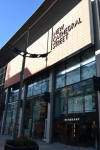 |
 |
 |
 |
 |
Salford Quays and MediaCityUK
We rode the Metrolink out to Salford Quays, which is the name given to the redeveloped site of the former Manchester Docks. Major attractions located here include Imperial War Museum North and The Lowry, a performing arts venue that includes an exhibition of the work of local artist L S Lowry. A more recent addition is the first phase of MediaCityUK, with tenants including the BBC, ITV and the University of Salford.
 |
 |
 |
 |
 |
 |
 |
 |
 |
 |
 |
 |
City Centre and Bridgewater Canal
The photos below include views of Piccadilly Gardens, Manchester Town Hall, St Peter's Square, Manchester Central (a former railway station), Bridgewater Hall, Bridgewater Canal and Castlefield (site of a Roman fort).
 |
 |
 |
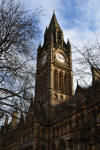 |
 |
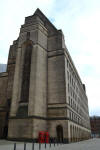 |
 |
 |
||||
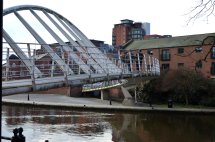 |
 |
 |
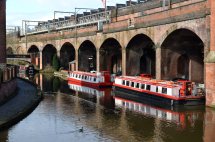 |
||
 |
 |
||||
 |
 |
 |
 |
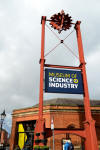 |
|
 |
 |
 |
|||
Cathedral
Although construction of the church building started in the 15th century, it only became a cathedral in 1847, with the creation of the Diocese of Manchester within the Church of England. The cathedral is situated in Victoria Street, very close to the Corn Exchange (see above).
 |
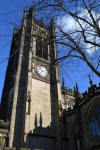 |
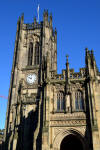 |
 |
 |
 |
 |
 |
 |
 |
Art Gallery
Manchester Art Gallery, which is owned by the city and free to visit, has an impressive collection of paintings and other artworks. It is located close to St Peter's Square.
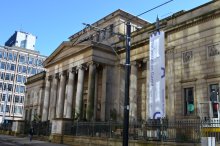 |
 |
 |
 |
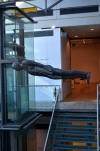 |
 |
 |
 |
Altrincham
Our second Metrolink jaunt was to the town of Altrincham, traditionally part of Cheshire but now absorbed into Greater Manchester. The popular Sunday market made an unusual and interesting choice for lunch.
Base: Mercure Manchester Piccadilly
| Linked reports from same trip: |
| Liverpool |
| South & SW England |
| Bristol |
| Lacock |
| Winchester |
| Salisbury |
| Bournemouth |
| Dorchester |
| Weymouth |
| Exeter |
| Dawlish |
